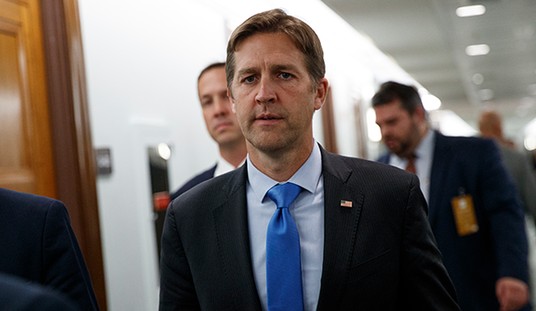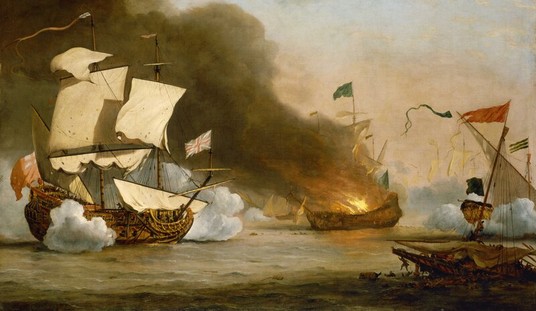The holiday season is upon us, and Americans everywhere are complaining about the high prices they are encountering at the supermarket and the retail outlets. Many have the notion that they are somehow being treated unfairly by greedy corporate America, and I suspect a majority of people have no idea of how public policy is hurting their pocket books. The public may have been upset with $4-a-gallon gasoline, but most go along blissfully ignorant of how much they pay for the Gordian knot of regulations and restrictions that their faithful servants have imposed on the American economy.
At first glance, one wouldn’t see a connection between a rash of stolen copper pipes from vacant buildings and sky-high prices for food items — say the $70 that a local St. Louis grocer was charging for a single holiday goose — but those connections are there, and they ultimately stem from environmentalist-driven land use policy imposed by the government. It’s difficult to imagine that restrictions in ANWR may be responsible for copper theft, but responsible it is! Ditto food; why would we pay more for our holiday feast because the price of natural gas has risen?
Food prices have been inflating for some time because of the ethanol requirement that George W. Bush mandated and that fans of alternative fuels — and corn growers in the Midwest — love so dearly, but there is another aspect to all of this that is going unnoticed; we have a shortage of ammonia, a critical ingredient in many types of fertilizer.
Ammonia cometh from natural gas.
According to this piece from the USDA Economic Research Service:
Outlook Report No. (WRS-0702) 19 pp, August 2007
The volatile and upward trend in U.S. natural gas prices from 2000-06 has led to a 17-percent decline in the nation’s annual aggregate supply of ammonia. During the period, U.S. ammonia production declined 44 percent, while U.S. ammonia imports increased 115 percent. Also, the share of U.S.-produced ammonia in the U.S. aggregate supply of ammonia dropped from 80 to 55 percent, while the share from imports increased from 15 percent to 42 percent. Meanwhile, ammonia prices paid by farmers increased from $227 per ton in 2000 to $521 per ton in 2006, an increase of 130 percent. Natural gas is the main input used to produce ammonia. Additional increases in U.S. natural gas prices could lead to a further decline in domestic ammonia production and an even greater rise in ammonia imports.
According to this piece at Spero News:
Historically, a ton of ammonia equaled the cost of about eighty bushels of wheat, that is, $2.25 for a wheat bushel against $200 for a ton of ammonia. This ratio held for forty years. Two years ago that long-standing relationship broke down. Today wheat is $4.50 and ammonia is $1,000; over two hundred bushels of wheat are required to purchase a ton of ammonia.
So this dearth of ammonia is putting serious inflationary pressure on grain production, which means that meat production — and ethanol, for that matter — becomes more expensive.
But what does this have to do with copper pipe theft? According to Mining Exploration News:
It’s all because of the high price of natural gas, which when converted into ammonia is used to produce ammonium nitrate, a key ingredient in fertilizers and explosives. Natural gas prices are up 75 percent so far this year and ammonia prices have doubled since last summer.
The price rises have added to explosives companies’ profits but for miners it is an added cost, along with higher diesel, energy, and labor expenses, narrowing their margins at a time when metals and coal are in big demand.
Which has driven the price for recycled copper — and other metals — through the roof, leading to a crime wave where thieves steal the metal to sell to scrap traders.
While copper may be the most dramatic incident of metal inflation as a result of the increased cost of mining — other government regulations add into the mix as well in the mining industry — it is hardly alone, and increasing metal costs drive inflation in America’s manufacturing industries as well. Cars cost more — which has hurt the U.S. automakers, contributing to the need for a bailout — aluminum siding costs more, gadgets cost more, and the price of those wonderful toys that will so light up your toddler’s face on Christmas morning cost more.
What we have is general inflation across the board, all because of a scarcity of natural gas.
According to the U.S. Geological Survey:
- Federal lands with potential for oil or natural gas resources, including split-estate minerals, total 279.0 million acres.
- Undeveloped gas resources under these federal lands total 231.0 trillion cubic feet, comprising 214.1 trillion cubic feet of undiscovered technically recoverable resources and 16.9 trillion cubic feet of reserves growth.
- Total proved reserves under these federal lands total 5.3 billion barrels of oil and 68.8 trillion cubic feet of natural gas.
- Approximately 60 percent (165.9 million acres) of the federal land is inaccessible. Based on resource estimates, these lands contain about 62 percent of the oil (19.0 billion barrels) and 41 percent of the natural gas (94.5 trillion cubic feet).
- Approximately 23 percent (65.2 million acres) of the federal land is accessible with restrictions on oil and gas operations beyond standard stipulations. Based on resource estimates, these lands contain 30 percent of the oil (9.3 billion barrels) and 49 percent of the gas (112.9 trillion cubic feet).
- Approximately 17 percent of the federal land in these areas (48.0 million acres) is accessible under standard lease terms. Based on resource estimates, these lands contain 8 percent of the oil (2.3 billion barrels) and 10 percent of the gas (23.6 trillion cubic feet).
So, we are starving in the midst of plenty. Environmental restrictions on exploration and development, coupled with resistance to the construction of gas pipelines, have made natural gas scarce. The use of natural gas has been encouraged by our government as an alternative to coal or other “dirty” fuels, yet the increase in demand is not being met with an increase in production. This shortage moves through the economy like a wave, driving price increases in sectors nobody considered.
The economy is like a cloth; each thread is part of the whole and pulling one thread can unravel the entire thing. For decades we have been tugging out those threads through environmental regulations, civil rights regulations (ahem, subprime mortgages), health and safety regulations, etc. Americans seem to want these things, but are unwilling to pay the price associated with them. Too many in this nation believe that they can have something for nothing. In this life, nothing is free and those costs will have to be passed along. We are reaping the harvest we have sown.
Oddly enough, few Americans understand these relationships and an angry nation — angry at the price being paid for decades of liberalism — has opted for “change” by electing someone who will redouble the liberal efforts that have caused this mess. Government policy is responsible for our current economic troubles, yet a majority of Americans voted to put government in charge of fixing it. This is reminiscent of the fox guarding the henhouse — oh, and hens are grain-fed and must be kept warm with natural gas, so the price of poultry and eggs will doubtlessly rise.
So, those of you who voted for Barack Obama have no right to complain when you pay extra for your holiday feast or when you break the bank on your annual Christmas shopping spree. The Bible says that as ye sow, so shall ye reap. America has sown restrictions for years and restrictions mean less of everything. We are now reaping a sparse harvest, placing a horn-o-empty on our tables.
Just be thankful you haven’t had your pipes stolen.









Join the conversation as a VIP Member